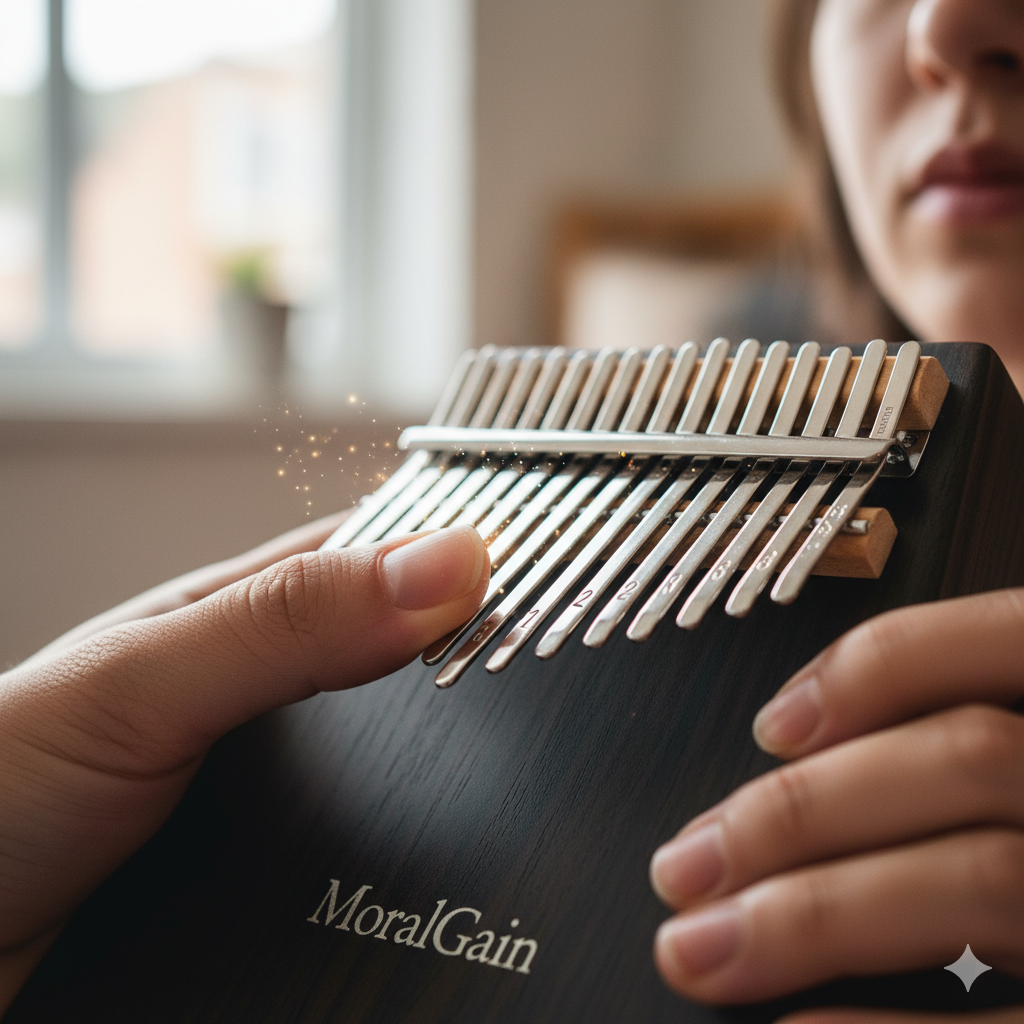Why Your Kalimba Doesn't Sound Good: 3 Common Mistakes 90% of Beginners Overlook

As a beginner with the kalimba, have you ever felt confused? You play exactly what's on the sheet music, but your instrument just doesn't sound as ethereal and clear as you'd hoped. Instead, it sounds a little dull, and even has some buzzing noises.
Don't worry, it's not a problem with your kalimba. In fact, 90% of beginners struggle with tone, and the root of the problem often lies in three small details you've overlooked. Master them, and your instrument's sound can achieve a qualitative leap.
The 'Secret' of Your Nails: Striking Position and Angle
Many beginners are used to plucking the keys with the fleshy pad of their thumb, but this rarely produces a crisp sound. The correct way to play is to use the very tip of your nail to strike the key.
-
Wrong Way: Using the whole thumb pad or the wide, flat part of your nail to "press" the key.
-
Correct Way: Using the front edge or side of your thumbnail to quickly and cleanly flick the key. This allows the key to vibrate more fully, resulting in a brighter, clearer tone. This is especially important if you have longer nails.
Just by changing the angle of your strike, you'll find the tone immediately improves.
The 'Fine-Tuning' of the Keys: Eliminating Annoying Buzz
Does your kalimba have a "buzzing" or "rattling" sound? This is usually because a key (or tine) is not properly aligned. During shipping or daily use, keys can shift slightly, causing them to rub against an adjacent key or the fixed support, creating a buzz.
-
How to Check: Play each key one by one and listen carefully for any buzzing. The buzz most often appears in the higher-pitched keys.
-
How to Fix: Use a tuning hammer to gently tap the sides of the key, adjusting it to the optimal position until the buzzing disappears. You can also use a small pair of pliers or even your fingers to gently reposition the key. Remember to be gentle and avoid using too much force.
The 'Strength' of Your Strike: Finding the Perfect Balance
When playing the kalimba, more force isn't always better. Too light, and the tone will sound weak; too hard, and it may produce a harsh "clacking" sound.
-
Correct Way: Try using a balanced and moderate amount of force to pluck the keys. This requires some practice to feel how the keys respond to different pressures.
-
Practice Tip: Choose a few notes and play them repeatedly with varying force. You'll slowly discover that "sweet spot"—the perfect amount of force that makes the note sound the most full and beautiful.